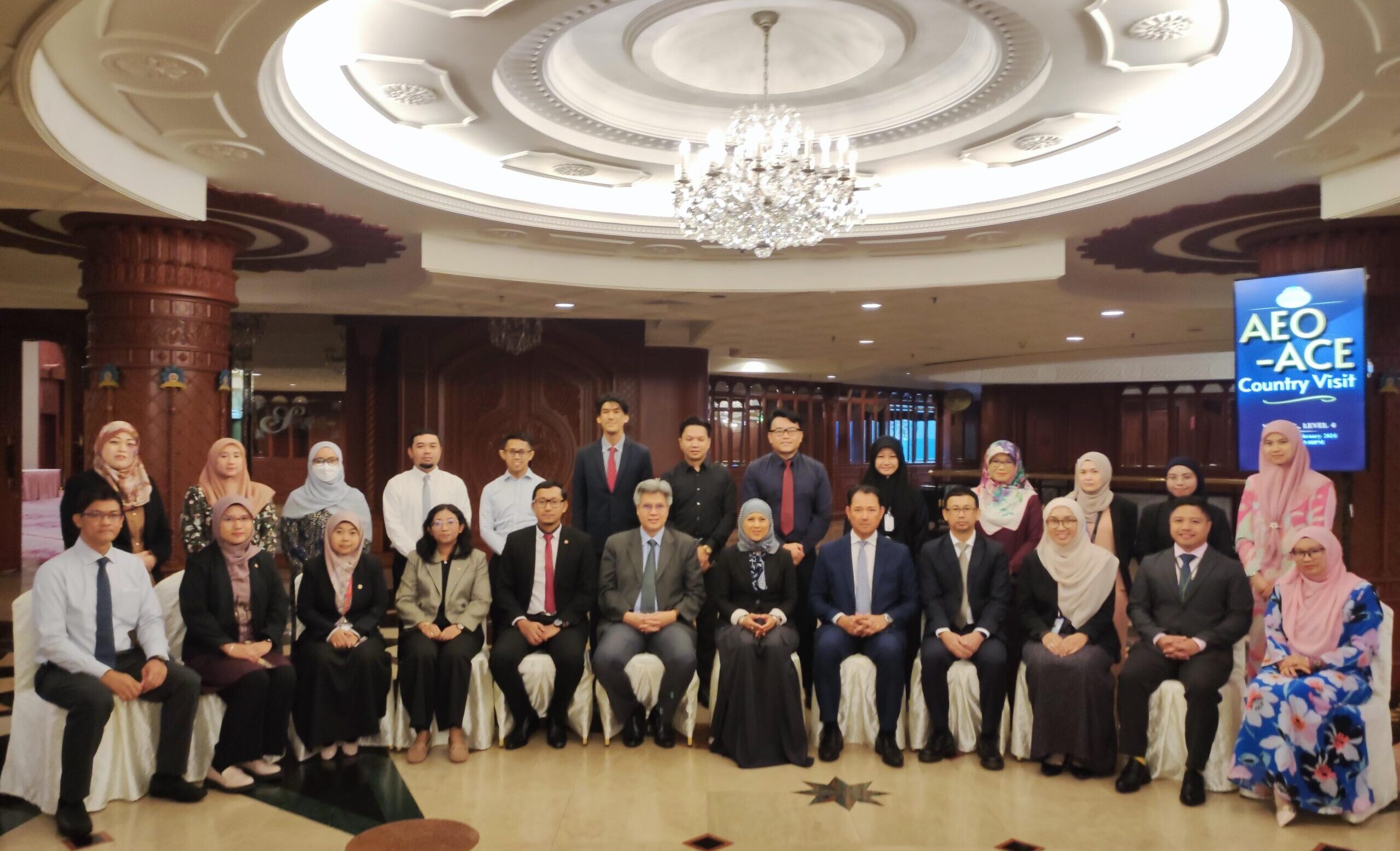Menu

Photo 1. All Participants of AEO8 Country Visit to Brunei Darussalam
Following the 8th ASEAN Energy Outlook (AEO8) Workshop I in Bogor, Indonesia, last November, the ASEAN Center for Energy (ACE) will visit ten ASEAN member states (AMS) to share and consult on the initial modelling results throughout January until March 2024. On 12 February 2024, ACE conducted the AEO8 Country Visit to Brunei Darussalam, the third event following the visits to Myanmar and Indonesia. During these visits, ACE invites energy officials and relevant stakeholders from AMS to gain additional input and check for the modelling, such as data and assumptions. AEO8 Country Visits are supported by Japan’s Ministry of Economy, Trade, and Industry (METI) and the Energy Foundation China (EFC).
The country visit started with opening remarks from the Permanent Secretary on Energy of Brunei Darussalam, Farida Talib. She welcomed ACE delegates for the consultation with Brunei’s officials regarding the development of AEO8 and the next cycle of the ASEAN Plan of Action for Energy Cooperation (APAEC). She acknowledged the AEO8’s importance in outlining the necessary policies, measures, and technologies required to facilitate the attainment of the APAEC aspirational targets.
The welcome remark was followed by the Executive Director of ACE, Dr. Nuki Agya Utama. Dr. Nuki emphasised the role of ACE in supporting AMS in accelerating economic growth and energy integration. ACE has achieved a huge milestone by performing up to 100% modelling works in-house to develop AEO, cementing ACE status as an ASEAN energy think tank and further embodying the spirit “from ASEAN by ASEAN to ASEAN.” He also encouraged all participants to be actively involved in the discussions.

Photo 2. Data Discussion During Country Visit
A Progress update on AEO8 was given by Rika Safrina, Senior Analyst of Energy Modelling and Policy Planning (MPP) of ACE. The update on AEO8 showed the structure of the reports and scenarios used in the data modelling, as well as a brief history of previous AEO reports. AEO8 also showcases new technologies and practices that AMS can use in their future energy-related matters.
This year’s country visits are also an opportunity to receive input on the next APAEC 2026-2045, which will cover the 2026-2030 period as the first phase. The presentation was given by Rika Safrina. The discussion offered insights into what Brunei’s priorities and strategies are in the energy sector. The current APAEC 2016-2025, saw energy security, accessibility, affordability and sustainability, as well as energy integration, as its main priority. ACE took input from Brunei officials on the country’s priority in its energy sector, mid- and long-term targets, technologies or energy sources that Brunei may use, and Brunei’s expectation of ASEAN’s energy cooperation.
Ending the first half of the country visit is the presentation on the Low Emissions Analysis Platform (LEAP) model, given by the MPP Manager of ACE, Dr. Zulfikar Yurnaidi. This presentation was given to show officials how the results from AEO8 are calculated and achieved as well as to address concerns that officials might have about the data, scenarios and results for further improvement in analysis and modelling.
The second half of the country visit discusses the data and results of the AEO8 modelling. The session starts with Dr. Ambiyah Abdullah, MPP Senior Officer of ACE, on the initial findings of the Baseline Scenario and AMS Target Scenarios (ATS). These discussions serve to ensure that government officials and ACE vision are in line and that any new data or policies can be provided to ACE to be used in the data modelling. One discussion in this session is to check the results of the energy forecast from LEAP and how missing data is approached in AEO8.
Dr. Ambiyah Abdullah also discussed the constraints for the other scenarios, involving least-cost optimisation and carbon neutrality strategies. These discussions seek to clarify some assumptions and questions that include Brunei’s energy demand and supply. Some discussions include the demand of specific sectors, more efficient technologies in energy demand, and additional emerging and net zero technologies that Brunei wants to consider.
The next discussion was about data on socioeconomics, policy, energy demand, supply, and transformation given by Silvira Ayu Rosalia, Energy Statistician and Data Visualisation Officer of ACE. This session is to validate and attain updated data and policies. One topic in the discussion is Brunei’s energy policies and the implementation of future energy policies. Some concerns from Brunei relate to the changes in these policies that may impact the data modelling results in AEO8. These discussions ensure that the modelling and data are acceptable and accurate for AMS.
The last session in the country visit was about energy investment, given by Dr. Ambiyah Abdullah. The presentation discussed the energy investment climate in ASEAN, the impact of global conditions on energy and the requirements of energy investment to achieve carbon neutrality in 2050. A challenge facing energy investment is the limited public finances available for energy investment and the relatively low levels of clean energy investment in ASEAN due to its associated risks. One significant point in this session is the impact of the situation in Ukraine and the Middle East on energy prices, specifically oil, and the shift towards more renewable energy. A remark from an official from Brunei expressed that more private companies are interested in clean energy investment in ASEAN as time goes by.
The AEO8 Country Visit to Brunei Darussalam not only provided a lot of valuable inputs for the AEO8 team, but also facilitated knowledge sharing for all participants in terms of energy modelling, policy, data, planning, and investment, that might be helpful to bring back to their respective institutions.
